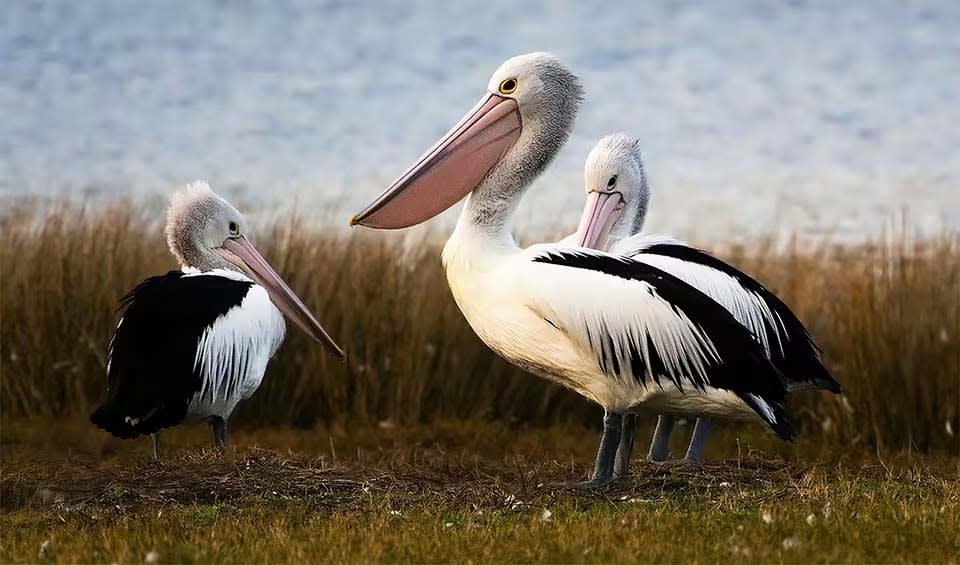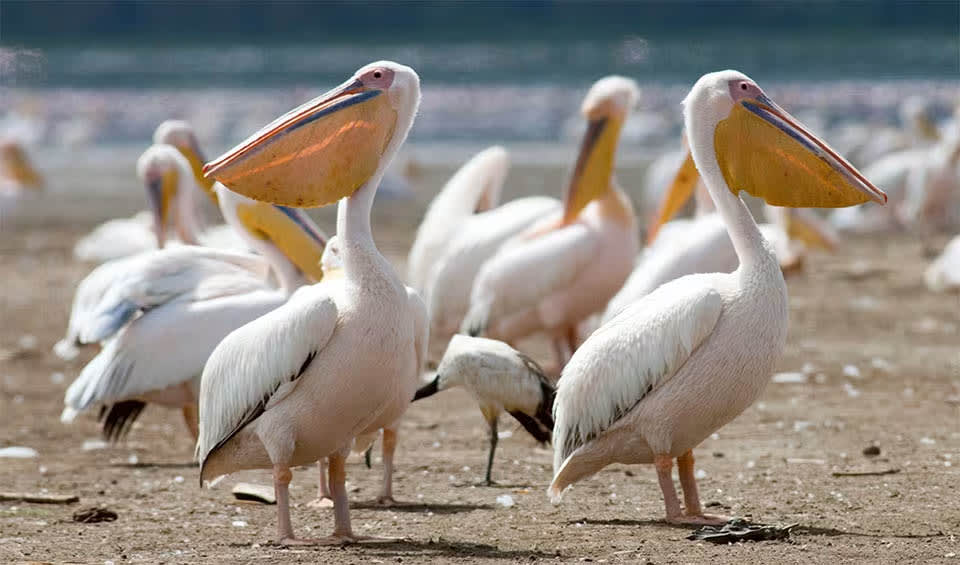Pelecanus – Pelicans
Their beak pouch can easily hold up to 3 gallons (11 liters) of water
Pelicans are large water birds that make up the family Pelecanidae. They are among the most recognizable birds due to their distinctive morphology, particularly their long beaks and large throat pouches used for catching and draining water from scooped-up prey before swallowing. These pouches can hold up to three times more than their stomach can, allowing them to capture large amounts of fish or water at once.
The eight species of pelicans are found on all continents except Antarctica. They prefer warm regions and are typically found near lakes, rivers, and coastal areas. Pelicans are highly adapted for life near water, and their webbed feet make them excellent swimmers. Their bodies are built for buoyancy and surface swimming, with dense bones and air sacs under their skin, which aid in flotation.
Pelicans are gregarious birds, living in flocks of both small and large numbers. These groups are often seen flying in impressive V-formations or lines, a behavior that conserves energy by taking advantage of the updraft created by the bird in front. When one bird in the formation tires, it rotates back, and another takes its place at the point of the V.
Their social nature extends to their feeding habits. Some species, like the American White Pelican, engage in cooperative fishing, working together to herd fish into shallow waters to make them easier to catch. Others, like the Brown Pelican, dive from the air to catch fish, tucking their wings and plummeting into the water headfirst.
At rest, pelicans are known to adopt a characteristic pose, with their heads folded back upon their shoulders and their beaks resting along their breast. They may sleep standing up or lying down, and they are known to sleep on water as well.
Species in this genus
Peruvian pelican
Despite its large size and somewhat clumsy appearance on land, it is an exceptionally graceful flier
Australian pelican
These birds have been recorded to fly at 3000 meters (9850 ft)
Brown pelican
The smallest of the eight pelican species
Great white pelican
Underneath this colorful beak, there’s a hidden surprise – a built-in net for scooping up a delicious lunch!
Pink-backed pelican
Mostly pale grey or white, but when the light hits just right, you’ll see a rosy-pink blush across their back and wings






